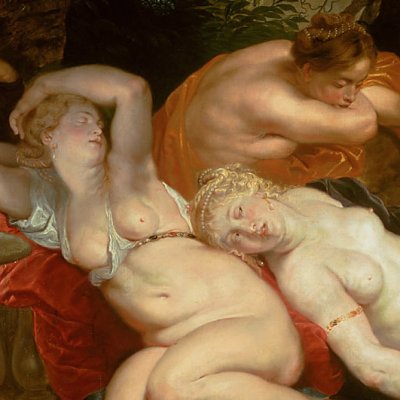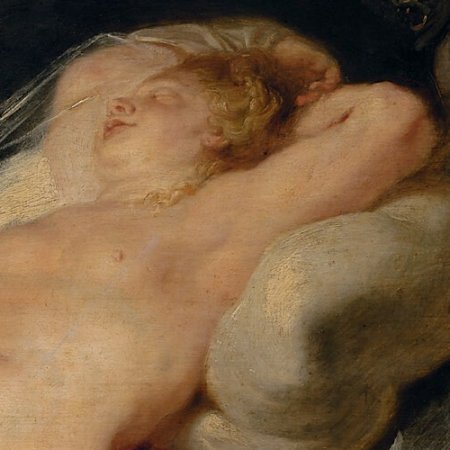Cimon and Iphigenia - Rubens
Description
Cimon is the handsome but foolish son of a wealthy Cypriot. His father, ashamed of him, has exiled him to the countryside. During a walk, Cimon discovers Iphigenia asleep by a fountain and falls in love with her. Rubens chose to paint this opening scene of the sleeping beauty, surrounded by her wives, as the simpleton looks on, awakening to his desire.
Cimon in love leaves the countryside and strives to become a perfect young man. But Iphigénie has been promised to a Rhodes aristocrat, Pasimonde. A boat secretly takes her to her future husband. Cimon intercepts the boat and kidnaps Iphigenia, intending to sail to Crete. But a storm brings them back to Rhodes, where Cimon is imprisoned on Pasimonde's complaint, and on the orders of her governor, Lysimachus.
However, Pasimonde is simultaneously preparing her wedding.
However, Pasimonde is simultaneously preparing his marriage to Iphigénie and his brother's to Cassandre, with whom Lysimaque is infatuated. Lysimachus pulls Cimon out of his dungeon and, in collusion with him, organizes the double kidnapping of Iphigenia and Cassandra on the day of the wedding. The two young men escape with them to Crete, marry them, and are then recalled with their wives to their homelands.
2. We sometimes read "Cimon and Ephigenia": Efigenia in Italian, is today translated Iphigenia (see ref. Folio, trans. Giovanni Clerico of the Decameron).
3. There is another version of this subject by Rubens, "Landscape with Cimon and Iphigenia", late 1630s, St. Petersburg, Hermitage Museum, Maria Varchavskaia, Rubens. The Sensuality of Life, n°40, p. 165.
Technical Data
Notice #000861



